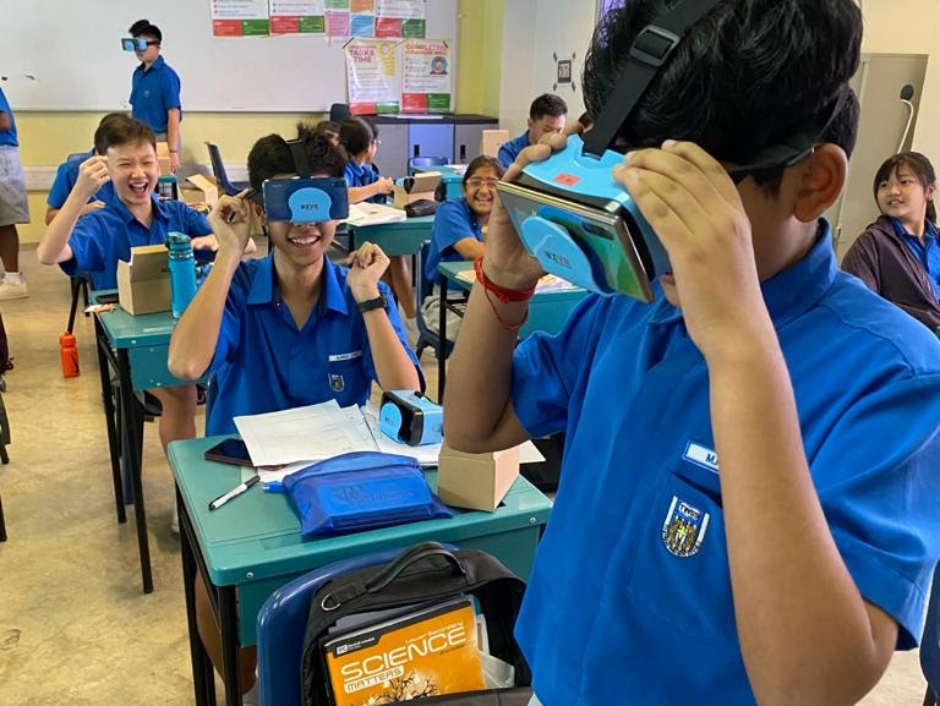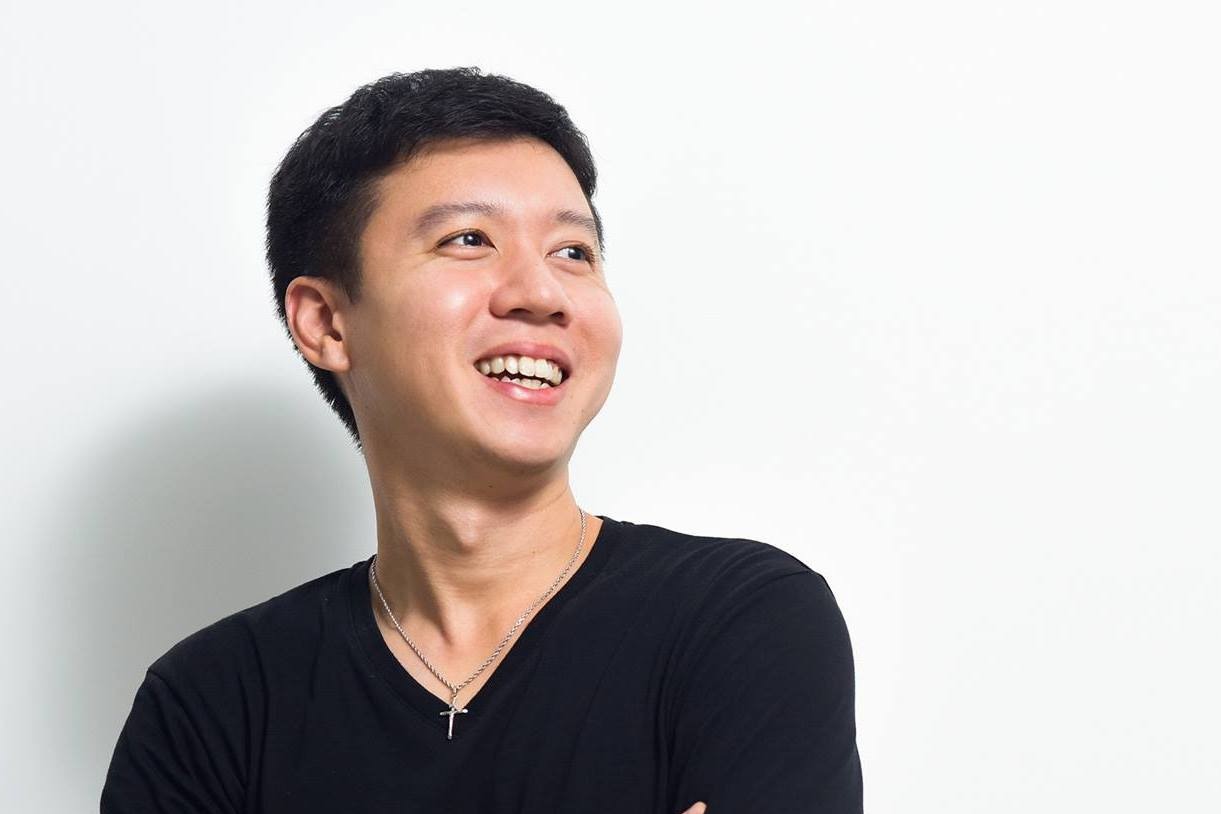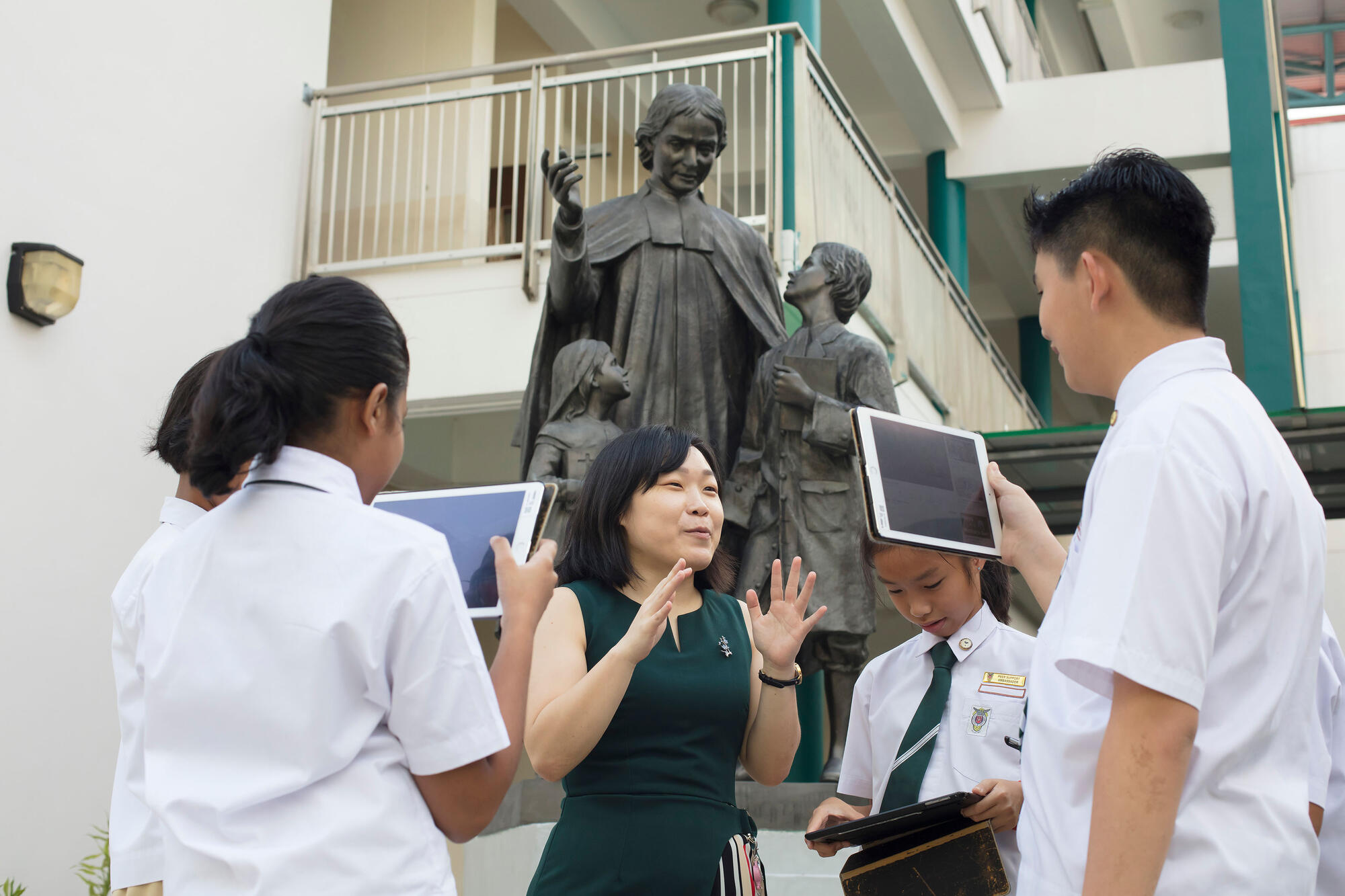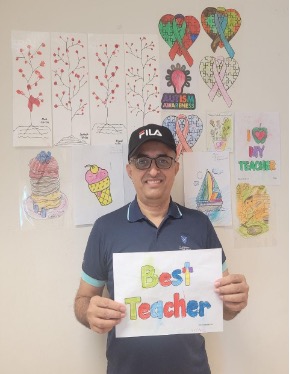The Basics of Virtual Reality (VR) – the high and the low
VR technology, which immerses you in a location with sights and sounds, is something my school was trying out as a teaching tool this year, even before COVID-19 struck.
Many associate VR technology with games and entertainment, but VR is often used for education and training purposes too, for instance, to practise potentially high-risk skills, such as flying a plane, or performing surgery.
However, bringing VR technology into schools is still new territory, not least due to the cost of the equipment. A VR headset that allows the user to interact with the simulated environment could easily cost upward of $500.
However, more affordable alternatives are available. Today, students can use their smartphones to access VR videos by slotting it into a simple cardboard or plastic headset that costs less than $10. This “lower-end” VR naturally does not offer the same depth of immersion or interactivity, but they still provide a wealth of experiential learning opportunities.
In Teck Whye Secondary School, we embarked on our experiment in VR with 40 cardboard headsets. We also managed to get 16 Oculus Go headsets on loan from MOE’s Education Technology Division (ETD), to help us test how “higher-end” VR can make lessons more engaging and effective.
Bringing VR home – something for everyone
When Full Home-Based Learning (HBL) was announced in April, I saw this as a unique opportunity for this experiment. After all, we were going to be stuck at home, and apart for some time – this was precisely when the advantages of VR would be most appreciated!
I selected my Sec 1 form class for this HBL experiment as I taught them both English and Geography – lots of room to try out different types of lessons there!
As for the equipment, the cardboard headsets were easy enough – I had enough for everyone in the class. They were also sturdy and cheap enough so I had no qualms about letting the students bring them home. That way, no one would be left out.
However, I also wanted to try out the higher-end sets we loaned from ETD as they offered a greater range of applications and activities that I could explore with my students. Unfortunately, I had limited headsets, and was naturally worried about leaving the more expensive machines in the hands of a group of teenagers!
Eventually, I decided to trust the students, and see this as an exercise in responsibility.
I selected 13 students as a test group for additional VR activities after school. Besides being interested in VR technology, they also had to be willing to commit to extra “homework” in the form of post-lesson reflections every week. Their parents had to agree to their participation too!
It took some time to brief all the kids, set my expectations and get the equipment sorted, but it was worth it as I knew everyone in class had something to look forward to during the Circuit Breaker!
Engaging through VR
For a start, I wanted to use VR to engage students more deeply in the topics we are learning in class. VR is known to be a powerful tool to teach empathy and I wanted students to connect to the issues emotionally through the immersive 3D experience of VR.
For Geography, I took my students on virtual ‘field trips’ that we would not otherwise be able to access. We ‘visited’ cities in other parts of the world and saw how different types of housing can affect people’s lives. With VR, students could experience what it is like to live in some of the most densely packed cities in the world, such as Mumbai and Manila.
The post-activity discussion was rich, and students were able to make many unique observations. They considered how people may feel uncomfortable in such environments. A few even related it to the current COVID-19 outbreak and asked how living in cramped conditions could pose public health risks.
For the test group with the more immersive VR headsets, I tried to explore topics outside the curriculum. For instance, we went deep into the Amazon rainforest. On another occasion, we went back in time to walk in the shoes of Anne Frank and shared her experience of being cooped up in her home during World War II. Students could relate to this more due to their Circuit Breaker experience.
The felling of the trees in the Amazon, in particular, was a visceral experience. As one student put it, he could feel the pain the trees must be feeling and found it almost unbearable to watch. Many said they felt guilt and a greater sense of responsibility to do something to protect our Earth.
The VR experience clearly touched the students in a way that no mere photo or words could.
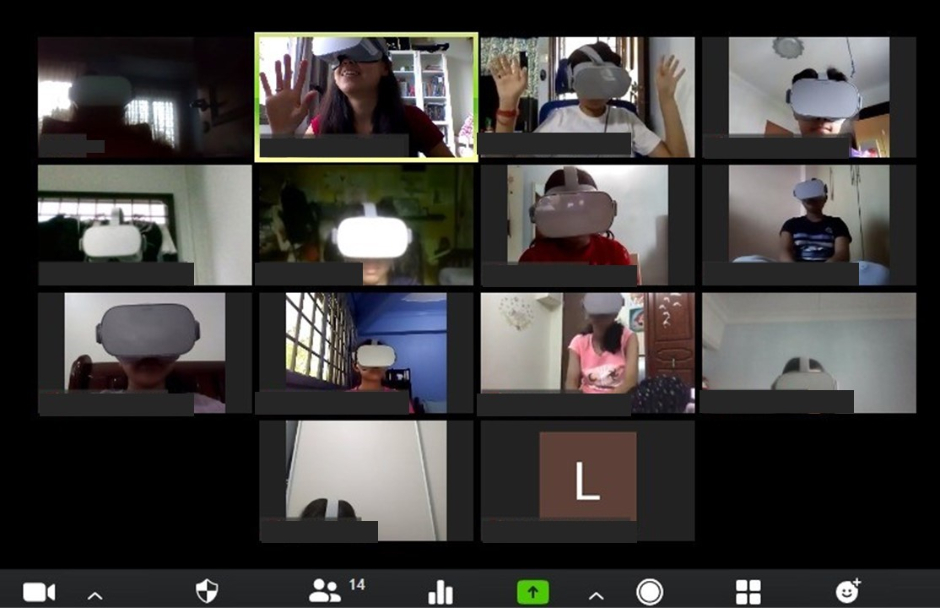 We used a live conferencing platform to share our observations during and after the VR sessions – it makes for an unusual screen shot though!
We used a live conferencing platform to share our observations during and after the VR sessions – it makes for an unusual screen shot though!
Empowering through VR
The second goal I had was to get my students to not just consume experiences in VR, but also create in VR. It may sound a little ambitious, but I believe that ICT skills are essential for our students.
As part of their Geography project on housing, I taught the class to take 360-photos of their homes with their smartphones, and got them to redesign various elements of their home using CoSpaces Edu, a computer application that allows students to do simple 3D-modelling and animation with basic coding and explore them in VR. They then had to explain why they made these modifications and reflect on the effect of space on people’s lives.
For example, students could add partitions to create privacy, and windows for a better sense of space – and of course decorate it to express their individuality! Besides demonstrating their knowledge of the topic of housing, they had a lot of fun sharing their ideas with their friends in VR.
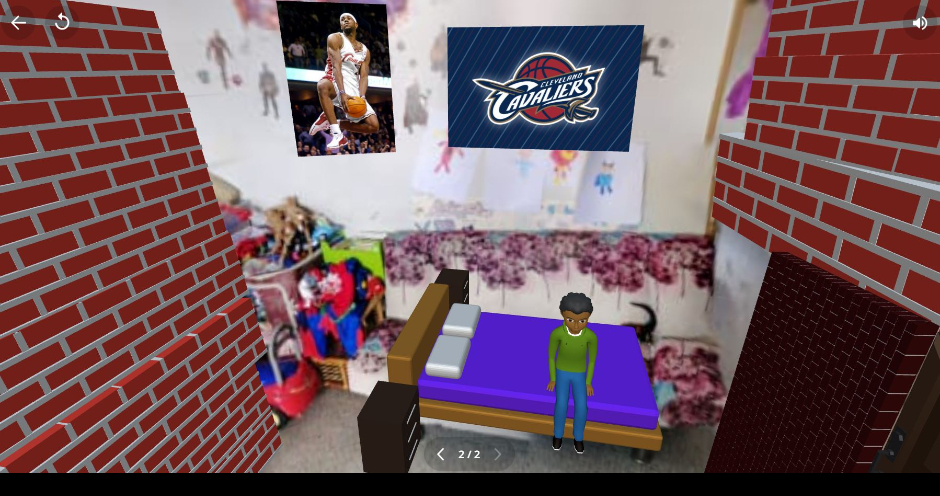 Students could use simple 3D modelling to change their home spaces – and explain why they made these modifications
Students could use simple 3D modelling to change their home spaces – and explain why they made these modifications
In English, I got students to work in groups to animate a short sequence of events in VR for a story they were working on. This helped them to build up details in their writing and made for more convincing narratives!
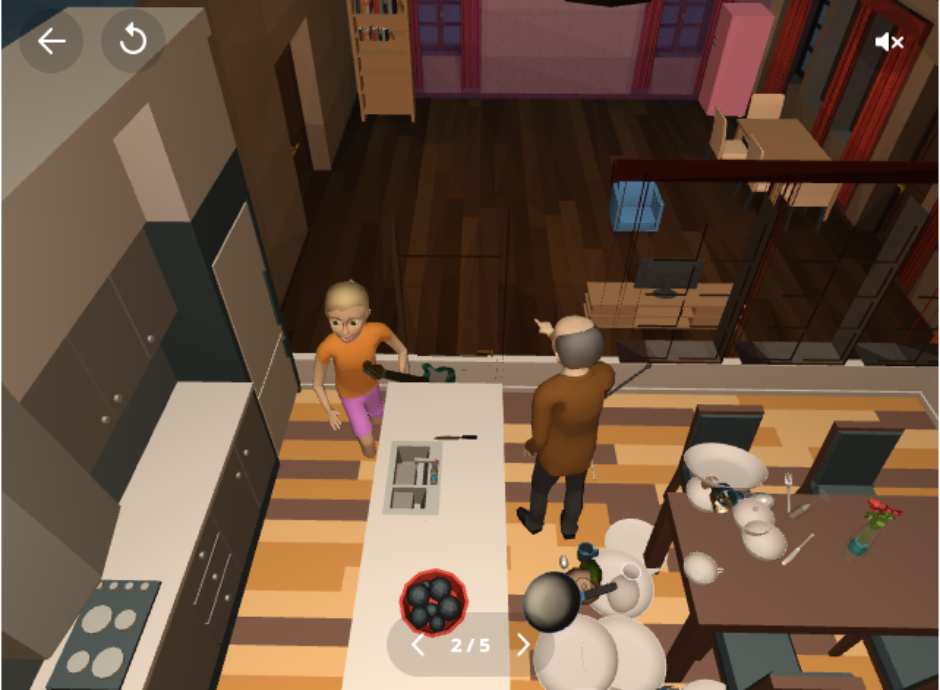 With VR, the characters and settings for their stories come to life – these details get translated into their writing and make their stories more interesting.
With VR, the characters and settings for their stories come to life – these details get translated into their writing and make their stories more interesting.
Naturally, teaching them to use the applications took up some time. But the students’ responses were heartening. Many expressed wonder at being able to create VR artefacts of their own, and were amazed to learn that they don’t need expensive equipment to do so.
This new-found confidence in their abilities and the belief that technology is not out of their reach – this keeps me going.
Besides technical skills, the test group also had the chance to choose the topics that they want to learn about outside the curriculum – it’s self-directed. Although I had strict controls over the programmes they could download to their headsets, I encouraged them to look through the applications available in the online store and propose the ones they were interested to explore in our after-class sessions. That’s how we came to explore walking in space and even try guided meditation together!
Connecting through VR
Outside of academic pursuits, VR was also invaluable for us as to connect with each other during the Circuit Breaker.
To complement the daily check-ins we have with students, I also tried meeting students in different virtual classrooms and environments. Imagine having a casual chit-chat with your classmates while flying in a hot-air balloon with scenic mountain views!
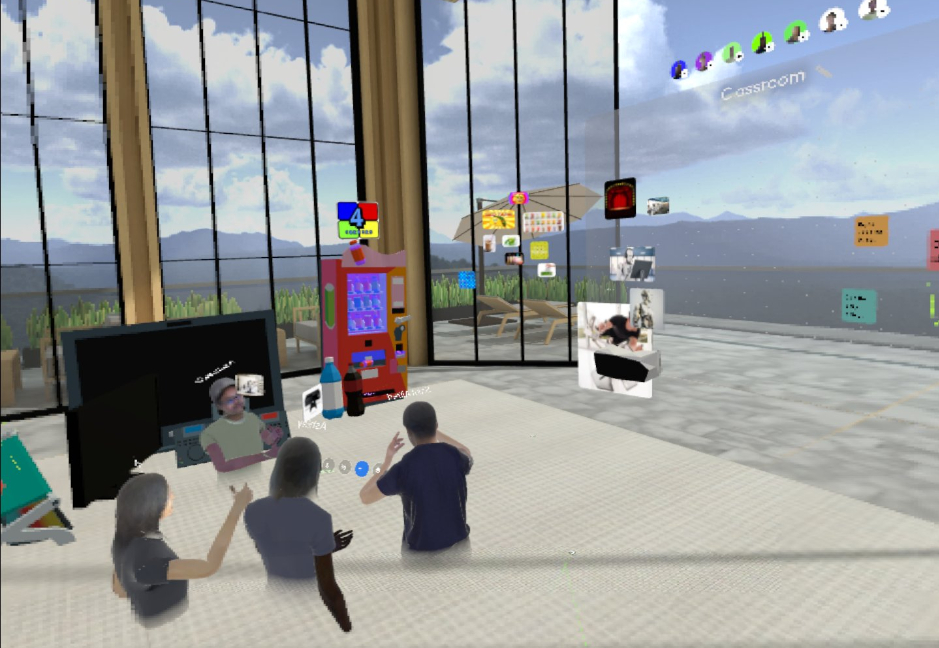 With VR, the classroom can be anywhere you want it to be!
With VR, the classroom can be anywhere you want it to be!
Students loved how they could “see” and “feel” their friends as though they were there in person. Being able to represent themselves in a variety of avatars was also fun– and perhaps less intimidating than seeing their faces on the screen. They were able to let off steam and play catch around the virtual classroom, and break off into smaller groups for a more cozy chat.
Everyone shared that they felt “connected” with each other and less lonely because of these sessions.
After HBL – back to reality?
HBL may be over, but not our experiments in VR. Not when the experiences of the past two months have been so enriching and positive!
In June, I welcomed the students back to school – and everyone (to my vast relief) brought their headsets back safely. I believe that there’s a lot more we can explore in VR for education though.
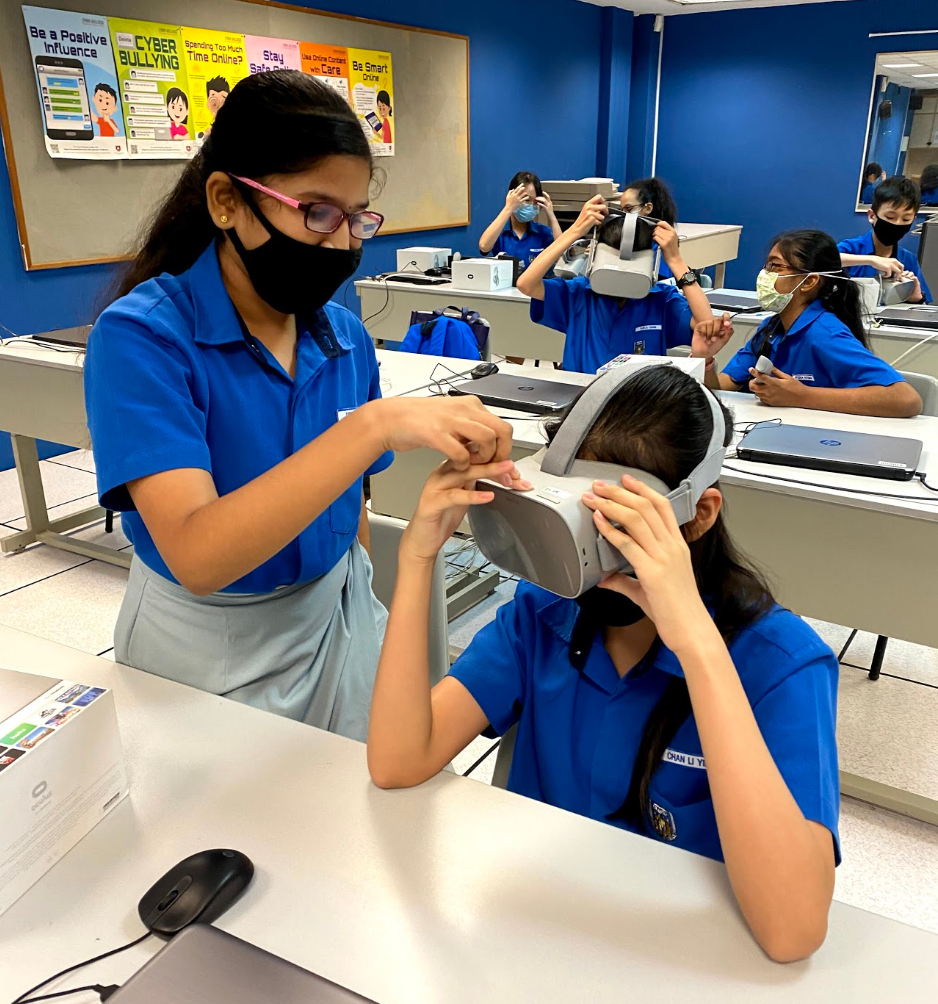 My group of 13 students are now “ambassadors” who help troubleshoot login and technical issues for their classmates!
My group of 13 students are now “ambassadors” who help troubleshoot login and technical issues for their classmates!
In Term 3, I formed a second group of students to test out different projects and activities with the specialised VR headsets. This way, others get the chance to experience what the first test group did during Full HBL. I also got the first group of students to guide and troubleshoot any technical issues for the others during our subsequent sessions – they are empowered to help others as my VR ambassadors!
With the experiences I gained, I am now more confident in the potential of VR. I am also happy to say that my colleagues, even those in other departments, have gotten on board and are exploring how VR can be used to enhance the learning of their students.
Of course, VR is still a developing technology and it will take a while before it is accessible for all. There’s a lot more to do and learn for both teachers and students!
I believe it has a place in the future of education though – because with the facilitation of a teacher, the virtual experience can create very real lessons for our students.



